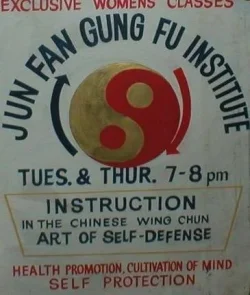Q: My friend said that a Wing Tsun fighter can't beat a boxer/MMA fighter/Blackbelt, is that true? Or can Wing Tsun beat (insert style here)?
A: I will address both of these questions together, because the answer is basically the same. As far as the age old "style versus style" debate, it's not the style, but the practitioner that wins or loses. Yes, I feel that Wing Tsun gives you an advantage over many other styles... obviously I feel that way, because this is what I do, but the fact remains that it all boils down to the person in the fight. I've seen black belts get there *** kicked in bar fights by drunk untrained brawlers. That doesn't mean that their style sucks, it means that they weren't very good at applying it.
The same thing with a Wing Tsun (or any other style) practitioner beating a boxer or MMA fighter. Those guys are professional athletes. Fighting is life. They are in top physical conditioning, they train twice a day, every day, for hours at a time. They clock more sparring hours in a month than most people do in ten years. They have more fights in a year than most people have in a lifetime. If you sit behind a desk all day, eat junk food, and go to your martial arts class 2 or 3 times a week for 2 hours, rarely spar and never fight, you probably shouldn't pick a fight with a professional fighter because your chances of winning are terribly slim. *HOWEVER*, if you train hard like an athlete, constantly spar and pressure test, go to every class, practice even when you're not in class, well then you kind of even out the playing field. It's not that (insert style here) can't beat a boxer or MMA fighter, it's that the average person isn't up to the task. The fault is not with the art. Boxers and UFC/MMA fighters are professional athletes and professional fighters, *most* people who casually train martial arts are not. If you aspire to get on that level, then we will help you get there.
Q: I heard Wing Tsun doesn't have any ground fighting/grappling. What if I fight someone who trains Brazilian Ju Jitsu? Should I study a grappling art too, or a more "complete" style like MMA?
A: First off, Wing Tsun DOES have ground defense and anti-grappling. Our WT lineage in particular is one of the few lineages that thoroughly explores and embraces grappling and ground fighting solutions. You will often hear us speak of "Forward Intent" when talking about technique application. Forward is just that, forward. It doesn't matter if you're standing up, laying on your back, or hanging upside down. Wing Tsun covers all 4 ranges of combat (kicking, punching, trapping, and grappling). We begin ground defense and anti-grappling right from the beginning. Being an experienced grappler and cross training with high level BJJ practitioners, I assure you that your techniques will work on the ground if you train for it. Since Wing Tsun is more geared towards real world self defense and street combat, ground grappling is not encouraged because in a street fight, that's where you die. If you're attacked in the street and you're rolling around on the ground trying to sink an armbar, you are wide open for the guys friends to stomp you into oblivion or pull a weapon, and there's not much you can do about it from down there, so the idea is to recover your footing and strategic position as quickly as possible. Also, takedowns on concrete or other hard surfaces pose their own set of problems and risks. When there is no ref, no rules, no mats, and the possibility of multiple and/or armed attackers, you never want to risk fighting on the ground if at all possible. Being a concept and principle based art, the only limitations on Wing Tsun are the practitioners ability to understand and correctly apply it. Some schools don't train this range because they simply do not have the skill or understanding to do so. We train for modern, real world scenarios, and ground fighting and takedowns are highly probable threats in a real attack. If you wish to train for MMA or sport combat, we can most definitely show you how to apply your Wing Tsun effectively on the ground. If you plan on joining the UFC, then you might want to explore other options as well since you are training for a specific platform, but in the real world you do not need any other style to make your Wing Tsun complete.

